Supporting businesses to retain jobs
The Government is introducing a subsidy program to support employees and businesses. The JobKeeper Payment is designed to help businesses affected by the Coronavirus to cover the costs of their employees’ wages, so that more employees can retain their job and continue to earn an income.
Keeping Australians in work and businesses in business will lay the foundations for a stronger economic recovery once the Coronavirus crisis passes.
JOBKEEPER PAYMENT
The economic impacts of the Coronavirus pose significant challenges for many businesses – many of which are struggling to retain their employees.
Under the JobKeeper Payment, businesses significantly impacted by the Coronavirus outbreak will be able to access a subsidy from the Government to continue paying their employees. This assistance will help businesses to keep people in their jobs and re-start when the crisis is over. For employees, this means they can keep their job and earn an income – even if their hours have been cut.
The JobKeeper Payment is a temporary scheme open to businesses impacted by the Coronavirus. The JobKeeper Payment will also be available to the self-employed.
The Government will provide $1,500 per fortnight per employee for up to 6 months. The JobKeeper Payment will support employers to maintain their connection to their employees. These connections will enable business to reactivate their operations quickly – without having to rehire staff – when the crisis is over.
Eligibility
Employers (including non-for-profits) will be eligible for the subsidy if:
- their business has a turnover of less than $1 billion and their turnover will be reduced by more than 30 per cent relative to a comparable period a year ago (of at least a month); or
- their business has a turnover of $1 billion or more and their turnover will be reduced by more than 50 per cent relative to a comparable period a year ago (of at least a month); and
- the business is not subject to the Major Bank Levy.
Employers must elect to participate in the scheme. They will need to make an application to the Australian Taxation Office (ATO) and provide supporting information demonstrating a downturn in their business. In addition, employers must report the number of eligible employees employed by the business on a monthly basis.
Eligible employers will receive the payment for each eligible employee that was on their books on 1 March 2020 and continues to be engaged by that employer – including full-time, part-time, long-term casuals and stood down employees. Casual employees eligible for the JobKeeper Payment are those employees who have been with their employer on a regular basis for at least the previous 12 months as at 1 March 2020. To be eligible, an employee must be an Australian citizen, the holder of a permanent visa, a Protected Special Category Visa Holder, a non-protected Special Category Visa Holder who has been residing continually in Australia for 10 years or more, or a Special Category (Subclass 444) Visa Holder.
Eligible employers who have stood down their employees before the commencement of this scheme will be able to participate. Employees that are re-engaged by a business that was their employer on 1 March 2020 will also be eligible.
In circumstances where an employee is accessing support though Services Australia because they have been stood down or had their hours reduced and the employer will be eligible for the JobKeeper Payment, the employee will need to advise Services Australia of their new income.
Self-employed individuals will be eligible to receive the JobKeeper Payment where they have suffered or expect to suffer a 30 per cent decline in turnover relative to a comparable prior period (of at least a month).
Where employees have multiple employers – only one employer will be eligible to receive the payment. The employee will need to notify their primary employer to claim the JobSeeker Payment on their behalf. The claiming of the tax free threshold will in most cases be sufficient notification that an employer is the employee’s primary employer.




